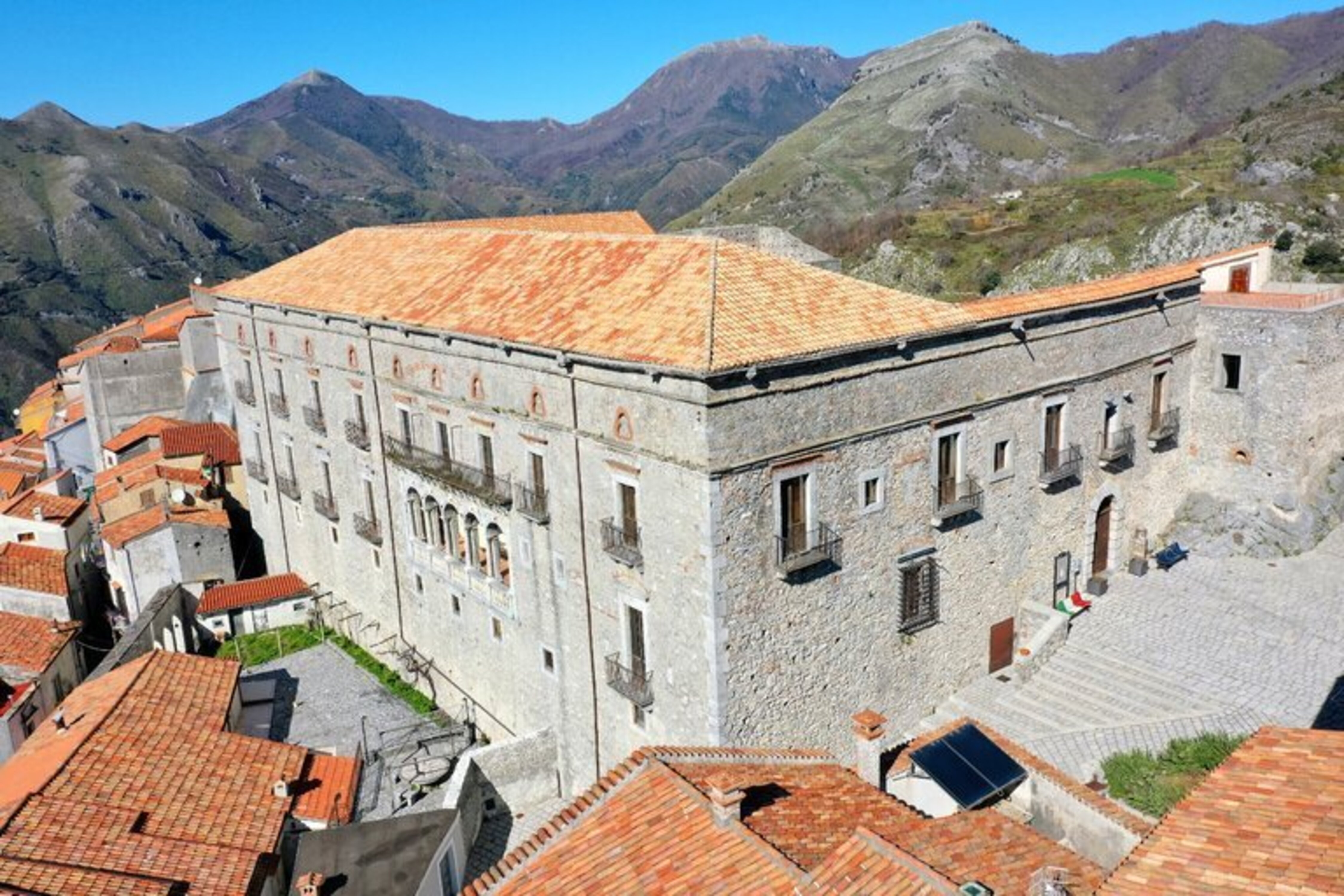Discovering Aieta, among The Most Beautiful Villages in Italy
Aieta, the eagle of the Pollino National Park

Art and Culture
Regione Calabria
Among "The Most Beautiful Villages in Italy", set like a precious jewel in the hills of the Pollino National Park, in the province of Cosenza, the historic village of Aieta is certainly worth a trip out of town.
Let's discover together what makes the historic centre of Aieta so special and what not to miss in this delightful slice of the Calabrian Pollino.
What to see in Aieta
Known as Asty Aetou, "City of the Eagle" (from the Greek αετός, "eagle"), Aieta dates back to Byzantine era. The toponym refers precisely to its dominant position atop the hill just over 500 metres above sea level. The historical centre, nestled between leaning houses and alleys, finds its symbol in the imposing Martirano-Spinelli Palace, a rare example of Renaissance architecture in Calabria. A majestic building, now a "National Monument", built in the 16th century by the Marquises Cosentino, lords of Aieta, then sold to the Spinelli family. In the centre of the façade, a beautiful loggia with columns and arches in local stone frames the openings; on the ground floor were the reception areas (the reception room, music and game rooms, the kitchens, the weapons room and the guardhouse); the dungeons housed prisons, cellars and water cisterns; the bedrooms were on the top floor.
In general, the colours that unify and harmonise the historical centre of Aieta are the white of the lime facades and the red of the roofs. To be admired in the alleyways are the magnificent stone portals worked by local stonemasons between the 18th and 19th centuries. Among the religious buildings stands out the Mother Church of Santa Maria della Visitazione, built in the 16th century on a Norman-era plan. The interior, in the shape of a Latin cross with three naves, is rich in frescoes, paintings on wood and notable works of art, such as the two altarpieces by Fabrizio Santafede, the icon of the Mother of Consolation, a 16th-century silver cross, the Madonna del Carmine by Dick Hendricksz (1544-1618), a Flemish artist who had a great influence on the painting culture of southern Italy, and the remarkable Bossi-Prezioso pipe organ of the Neapolitan school (1673). Of the Convent of the Minor Observant Fathers of St Francis of Assisi, demolished around 1950, only the Church of St Francis remains.

What to do in Aieta
The village of Aieta has a long textile tradition. English machines for processing wool arrived in Aieta around the beginning of the 20th century, and although there is no trace left of most of them, weaving and embroidery activities still survive today, protected by the Cultural Association "I Fili del Rinascimento", at the House of Ancient Crafts, where it is still possible to see weavers at work and to purchase valuable one-off pieces of traditional trousseau and clothing.
A weekend in Aieta is also an opportunity to enjoy outdoor activities and take a hike in the Pollino National Park. Horse-riding enthusiasts can try their hand at this activity at a famous local agritourism, an excellent starting point for a horseback ride through the woods to discover the typical Aieta Red Lily. Also recommended is an excursion to the Archaeological Area of Monte Calimaro, where there is a suggestive cave containing the remains of the ancient settlement of Aieta Vetere.

"A Different Tale" exhibition: Aieta
The exhibition ‘’A Different Tale‘’ represents a unique cultural project, designed to enhance some of Calabria's most fascinating villages through the art of illustration. Sixteen talented Calabrian authors have reinterpreted places, stories and popular traditions linked to these villages, creating modern works full of personality. Presented in Melbourne and New York in October 2024, the exhibition celebrates Calabrian identity in a dialogue between tradition and innovation, involving an international audience.
Federica Valenzisi, a graphic designer and illustrator originally from Calabria and now living in Rome, created the illustration dedicated to the village of Aieta (CS), with a special tribute to the charming ‘’Vico dei Baci‘’. Born in 1991, after graduating in Graphic Art at the Albertina Academy of Fine Arts in Turin, she continued her education in Rome, specialising in Graphics and Photography. Although she mainly works in advertising, she has never abandoned her passion for drawing, with which she expresses emotions and inner stories. Her works, characterised by simple lines and bright colours, aim to convey deep feelings, as demonstrated by her artistic contribution to the travelling exhibition.

https://calabriastraordinaria.it/en/news/discovering-aieta-among-the-most-beautiful-villages-in-italy







